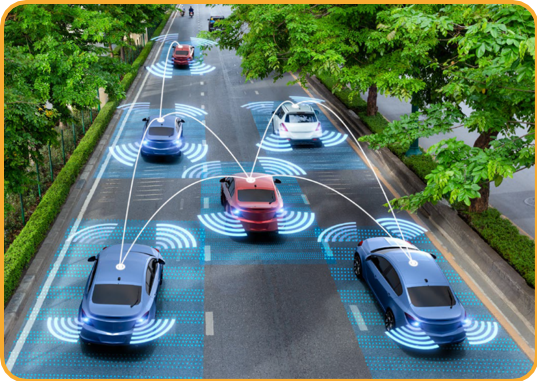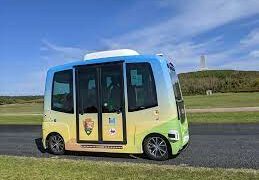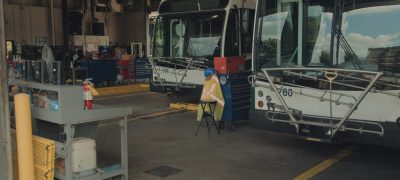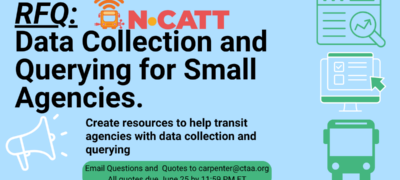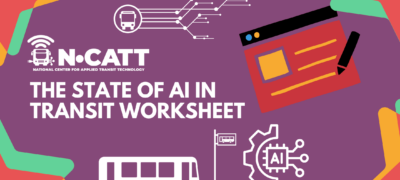Big Data
The internet and wireless phone technology have allowed unprecedented amounts of data to be collected and stored. Transit vehicles, too, record information every minute – location, passengers on and off the vehicle by stop, fare collection, video recordings, etc. Big Data is the concept that once a dataset becomes too large, it requires new statistical tools and techniques for analysis.
Artificial Intelligence/Machine Learning
Artificial Intelligence (AI) is the concept of computers being programmed to learn complex tasks in order to achieve some goal, and Machine Learning (ML) is typically considered a subset of AI. The emergence of Big Data allows powerful computer programs to analyze large amounts of information to aid decisions. For example, AI could automate the design of new transit routes using origin/destination data and thereby greatly increase transit planning efficiency.
Autonomous Vehicles
As computer programs have become more sophisticated, automating some or all driving functions has become increasingly within reach. There is a spectrum of automation possible, ranging from cruise control all the way to hands-free automated driving. Automated vehicle functions are not widely adopted in the transit industry today; however, could become more common as the technology matures.
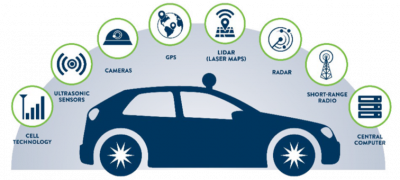
Connected Vehicles
Wireless communications technology has made it possible for vehicles to communicate with one another, opening many new transportation possibilities. One simple example is the automatic transmitter many drivers use for toll roads. This kind of seamless communications technology could be designed to decrease congestion on bus routes or otherwise benefit the flow and safety of transit vehicles.
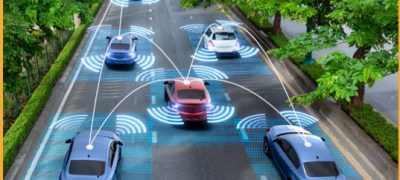
Internet of Things
Internet of Things (IoT) describes objects such as vehicles, televisions, appliances, and other “everyday” items equipped with sensors that can send data over the internet or other communications networks. IoT has presented opportunities for analysis of Big Data to inform decisions such as improving asset management, fine-tuning demand response routing, or acceleration/deceleration optimization for electric vehicles
Mobility as a Service
As new mobility options proliferate (especially in larger urban areas), choices for travel have multiplied: bus, bikeshare, ridesharing (e.g., Uber/ Lyft), carsharing (e.g., Zipcar). Mobility as a Service (MaaS) is where a single payment platform and mobile application can bundle these services together for individuals to efficiently choose the mode(s) that best fits their travel needs at the time of the trip. This can be purchased on a per-trip basis or as a monthly subscription package and can help reduce the use of personal vehicle based travel.
Mobility On Demand
Mobile phone technology has allowed for dynamic, on-demand transportation service at the time the trip is needed. Mobility on Demand (MOD) is the broad concept of requesting a trip when one needs it, rather than pre-booking a trip hours or days in advance. It can be extended to multiple modes of transportation that are available without pre- scheduling.
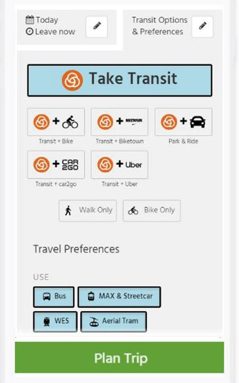
Automatic Vehicle Location/ Where’s my bus? App
Thanks to the proliferation of GPS technology, it is easier than ever to track the location of transit vehicles in real time. This function is referred to as Automatic Vehicle Location (AVL), and it can be used to power applications like “Where’s my bus?” mobile apps. AVL can also be used for tracking by the transit agency for on-time performance monitoring, driver relief trips, or for faster response in case of an incident.
Automated Passenger Counter
Among the methods for tracking ridership on a transit system is an Automated Passenger Counter (APC). This technology counts each boarding and alighting to calculate total ridership by stop, by route, by region, or by system. While the most common version of this uses infrared beams at the vehicle doors to count passengers, software advances are making it possible to use onboard video instead.
